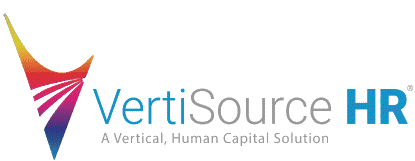Federal workplace law officials sued 15 employers in 10 states because they failed to file their EEO-1 reports.
These lawsuits were filed in states like New York and North Carolina, and the employers included companies from retail, construction, restaurant, manufacturing, logistics, and service industries. In the suit, the EEOC alleges the employers did not submit mandatory EEO-1 reports in reporting years 2021 and 2022.
Although this suit is filed, the EEOC is not seeking a monetary penalty against the employers. Instead, it is asking the courts to issue orders forcing the employers to prepare, execute, and file EEO-1 reports for the missing years and to require them to do so in the future.
The purpose of the EEO-1 report is to help private employers, with at least 100 employees and federal contractors or first-tier subcontractors with at least 50 employees, organize employee demographic data and submit it to the EEOC.
The EEOC uses this data for research and other evaluation purposes. Even though this requirement isn’t new, many employers have grown comfortable with the EEOC’s lack of enforcement. However, with these new lawsuits, businesses must start taking action now.
Steps to Take When Filing Your EEO-1 Reports
Here are a few steps you should take before filing your EEO-1 reports this year.
Pick Your Payroll End Date
In the EEO-1 reports, employers are required to pick a payroll end date between October 1, 2023, and December 31, 2023, as their “workforce snapshot period.” This payroll period will be used to identify which employees to report for this reporting cycle.
Categorize Your Employees
Ensuring that your job titles are categorized correctly and consistently is important.
There are ten different EEO job categories:
- Executive/Senior-level officials and managers
- First/Mid-level officials and managers
- Professionals
- Technicians
- Sales workers
- Administrative support workers
- Craft workers
- Operatives
- Laborers and helpers
- Service workers
Allow Employees to Make Choices
During this process, allow employees to self-identify their gender and race/ethnicity while providing a statement about the voluntary nature of the inquiry.
The race/ethnicity categories are:
- Hispanic or Latino: A person of Cuban, Mexican, Puerto Rican, South or Central American, or other Spanish culture or origin regardless of race.
- White (Not Hispanic or Latino): A person having origins in any of the original peoples of Europe, the Middle East, or North Africa.
- Black or African American (Not Hispanic or Latino): A person having origins in any of the black racial groups of Africa.
- Native Hawaiian or Other Pacific Islander (Not Hispanic or Latino): A person having origins in any of the peoples of Hawaii, Guam, Samoa, or other Pacific Islands.
- Asian (Not Hispanic or Latino): A person having origins in any of the original peoples of the Far East, Southeast Asia, or the Indian Subcontinent, including, for example, Cambodia, China, India, Japan, Korea, Malaysia, Pakistan, the Philippine Islands, Thailand, and Vietnam.
- American Indian or Alaska Native (Not Hispanic or Latino): A person having origins in any of the original peoples of North and South America (including Central America) and who maintains tribal affiliation or community attachment.
- Two or More Races (Not Hispanic or Latino): All persons who identify with more than one of the above five races.
Choose a Point of Contact
Choose one employee as the “account holder;” this person will file the EEO-1 report through the EEO-1 Component 1 Online Filing System (OFS).
There are separate instructions for new filers and those changing their point of contact. These account holders must submit the workforce demographic data electronically in the OFS through either manual data entry or data file upload. The employer’s certifying official must then certify the EEO-1 Component 1 report(s) in the OFS.


